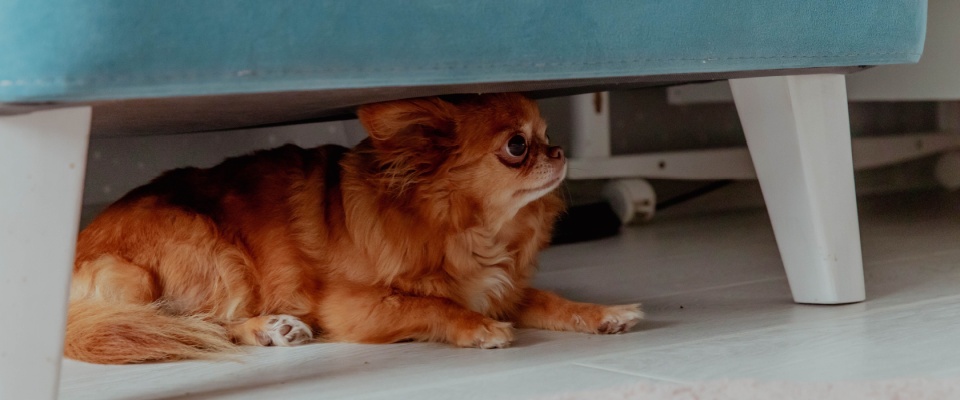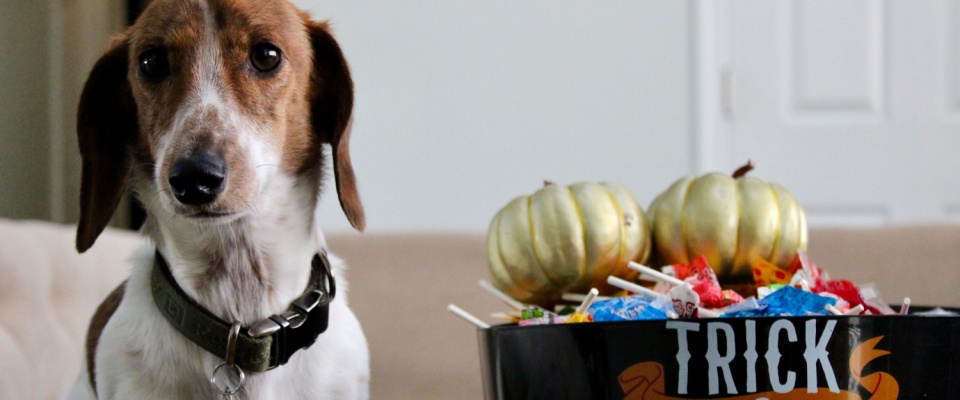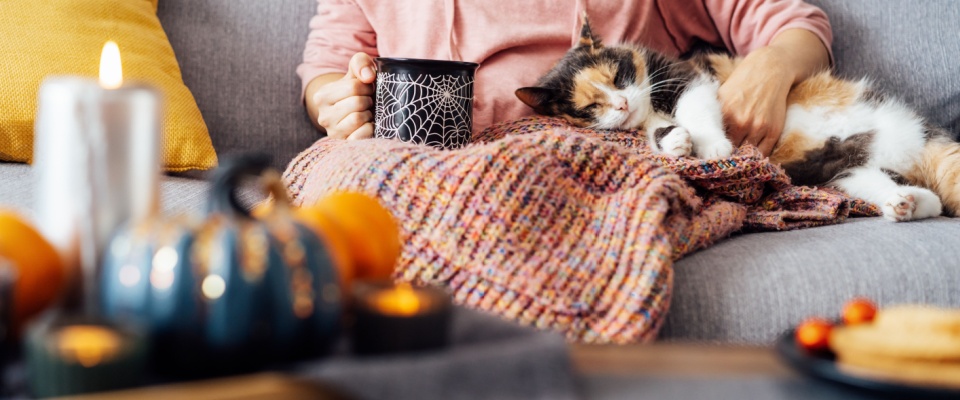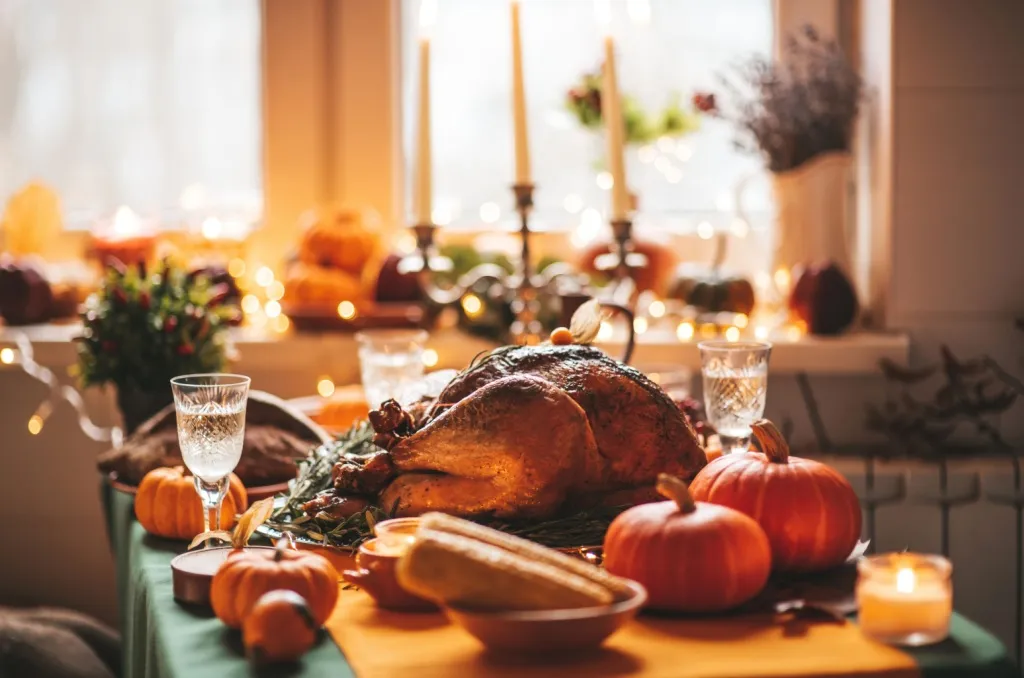Halloween can be one of the most thrilling nights of the year, but not necessarily for your pets. Between constant doorbell rings, strange costumes, noisy decorations, and candy scattered around, the night can be stressful and sometimes dangerous for cats and dogs.
As a renter, your space might be smaller, closer to neighbors, and more active on Halloween night, which makes keeping your pet calm and safe more challenging. That's why knowing practical safety tips can make all the difference for your pet on Halloween.
Why Halloween can be stressful for pets
From your pet's perspective, Halloween may feel like sensory overload. Constant doorbell ringing, people in masks, and sounds of fireworks or loud music can all trigger anxiety.
Dogs may bark excessively, hide, or try to escape when stressed. Cats may bolt under furniture or become skittish. If you live in an apartment, noise from shared hallways or nearby parties can intensify these reactions.

To help your pet stay calm, stick to your usual routine as much as possible:
- Keep feeding and walking times consistent.
- Ensure your pet gets plenty of exercise earlier in the day. A tired pet is less likely to react to evening chaos.
Create a safe space for your pet
If your apartment has many trick-or-treaters, set up a quiet space away from the front door. Close the blinds, turn on a TV or soft music, and make sure your pet has their bed, favorite blanket, or toys nearby.
For cats, a cozy hideaway like a covered cat bed or elevated perch can help them feel secure. For dogs, a crate covered with a light blanket or a corner of your bedroom works wonders.
Let your pet get used to this setup a few days before Halloween so they know it's a safe and comfortable spot.
Keep decorations pet-safe
Decorations make the season fun, but some pose hidden risks to pets. Candles in pumpkins can burn curious noses or paws, while glow sticks can leak chemicals if chewed. Electric cords and battery-powered decorations can be tempting yet dangerous chew toys.
These Halloween pet safety tips can make the difference between a calm celebration and a spooky one for your pet:
- Choose battery-operated candles instead of real flames.
- Keep cords and small decorations out of reach.
- If you use motion-sensor decorations, avoid placing them near your pet's usual spots to prevent unnecessary stress.
- Keep in mind that some holiday plants, like certain types of decorative corn or moldy pumpkins, can upset your pet's stomach if eaten.
Keep candy out of reach
Chocolate, xylitol (a sugar substitute found in sugar-free candy), and raisins are all toxic to pets. Even small amounts can cause serious health issues.

Store all candy and treats in sealed containers out of reach and remind guests (especially children) not to feed anything to your pets. If you think your pet has eaten something toxic, call your vet or an emergency animal clinic immediately.
Dress pets safely
Avoid costumes with small parts your pet could chew off or swallow, and make sure your pet can move, breathe, and see easily.
If your pet shows signs of distress, like refusing to move, panting heavily, or trying to escape the outfit, skip the costume altogether. A festive bandana or Halloween collar makes a safe alternative.
Avoid pet-related issues in apartments
If you live in a building with shared hallways or neighbors nearby, give them advance notice about your pet before Halloween night. This helps if your dog tends to bark when there's noise in the hallway or if your cat might dart out when doors open.
Double-check that your pet's ID tag and microchip information are current, in case your pet escapes when doors open frequently. As there are multiple exits and constant foot traffic in your apartment, this step is important.
Finally, if your renters insurance includes pet liability coverage, it can protect you if your pet accidentally damages property or injures someone. It's an often-overlooked safeguard worth checking before the holiday.

From avoiding unsafe treats and decorations to creating a quiet retreat and keeping identification current, these safety tips for your pet on Halloween can help you celebrate without worry.
The goal isn’t to take away the fun of the holiday. It’s to make sure everyone in your apartment, two-legged and four-legged alike, can enjoy it without stress. When your pet feels secure, the night feels a lot more enjoyable for everyone.
Key takeaways:
- Keep candy away. Chocolate and xylitol (a sugar substitute) are toxic to pets.
- Set up a calm area away from the door and noise.
- Check decorations and avoid cords or choking hazards.
- Make sure tags and microchips are up to date before Halloween night.
Frequently asked questions
A: Look for signs like shaking, hiding, pacing, panting, or excessive barking. Creating a calm environment with familiar smells and sounds can help ease anxiety.
A: Only treats made specifically for pets. Never give chocolate, gum, or sugar-free candy. Many pet stores sell festive, safe treats your dog or cat will love.
A: It's better not to. Even friendly pets can get nervous around costumes or sudden movements. Keep them in a quiet, enclosed area during peak trick-or-treating hours.
A: Contact your vet or the Animal Poison Control Center immediately. Keep the candy wrapper or product label if possible. It helps the vet identify what your pet ate.




